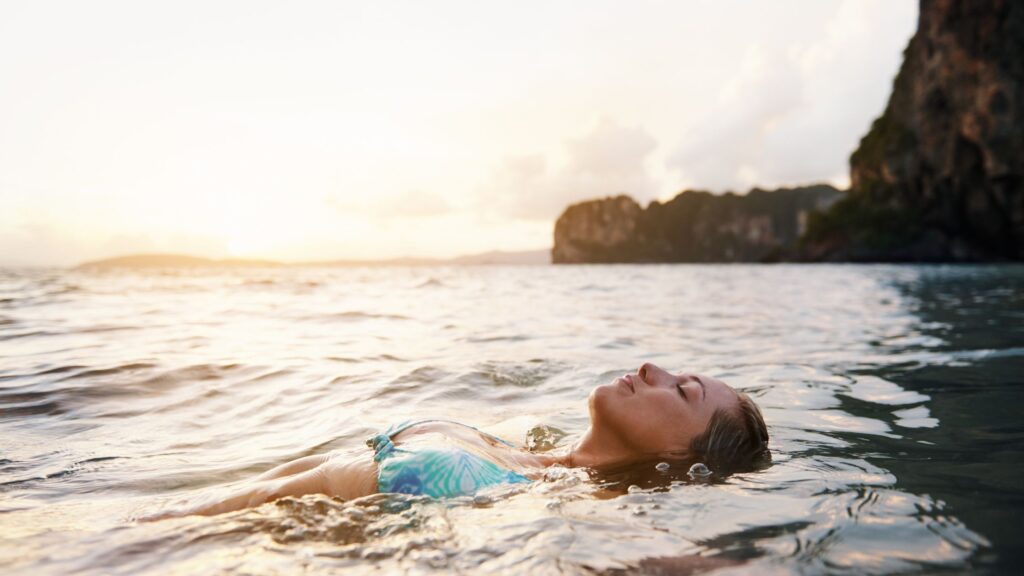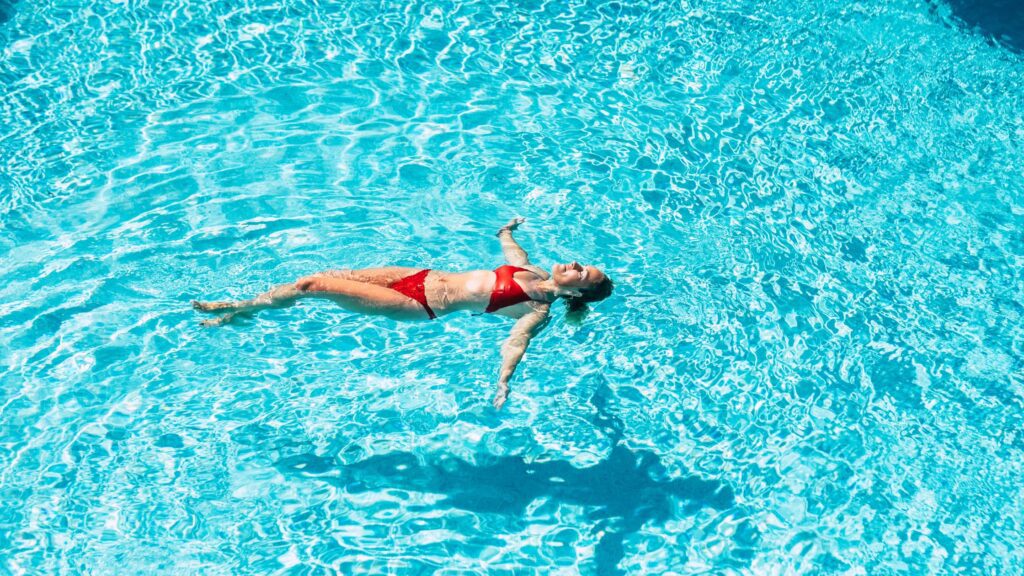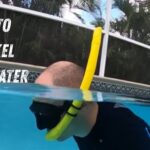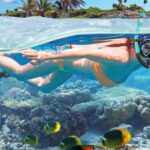Do You Need To Know Swimming For Snorkeling
Do you need to know swimming for snorkeling? This age-old question has caused more anxiety than a pop quiz in a high school swim class. If you’ve ever stood on the edge of a tropical shoreline thinking, “Well, I can doggy paddle… does that count?”, you’re not alone.
And if your idea of swimming is a glorious five-second float followed by a frantic splash for the edge — congratulations, you’re exactly the person this article is for.
Before you cancel that once-in-a-lifetime snorkeling excursion or resign yourself to sitting on the boat eating chips while others swim with sea turtles, let’s get something straight.
Do You Need to Know Swimming for Snorkeling?
Do you need to know swimming for snorkeling? Short answer: No, but… you do need to know how to stay calm in water and follow basic safety measures.
Long answer: While snorkeling does not require advanced swimming strokes or Olympic-level breaststroke, it does require a level of comfort in the water.
You can snorkel if you can’t swim, but your experience will be drastically better and safer if you prepare, use proper gear, and stick to specific environments (like calm, shallow waters).
Let’s break this down like a sea cucumber under stress (don’t worry, we’ll explain that one later too).
The Difference Between Floating and Swimming in Snorkeling

Many beginners wrongly assume that snorkeling involves long-distance swimming. In reality, snorkeling is more about floating face-down in the water than actively swimming.
If you’re wearing a snorkeling mask and a snorkel vest, your job is to relax and breathe. You might paddle your legs a bit or do a light flutter kick, but it’s less of a workout and more of a meditative float with fish.
That said, while snorkeling doesn’t require swimming in the traditional sense, knowing how to move calmly in water is a huge plus. Does snorkeling require swimming? Technically no, but being water-confident is essential.
INTERESTING READ: Can you snorkel with glasses?
Is Snorkeling Safe for Non-Swimmers?
This is the number one concern and rightfully so.
Yes, snorkeling is safe for non-swimmers if the right safety measures are in place. That includes:
- Wearing a snorkeling life vest or buoyancy aid
- Choosing shallow water locations
- Joining a guided group tour
- Never snorkeling alone
- Using flotation devices like noodles, rings, or life belts
Let’s be honest, can you snorkel without knowing how to swim and be 100% carefree? No. But with proper guidance, gear, and a calm environment, you can still enjoy the experience without swimming like Michael Phelps.
Snorkeling with a Life Jacket: Does It Make It That Easy?
Here’s the magic trick for non-swimmers: the life jacket. Wearing a snorkeling vest not only keeps you afloat but adds a psychological sense of safety.
In fact, many experienced snorkelers use vests — not because they can’t swim, but to conserve energy, stay afloat longer, and enjoy the view. For non-swimmers, it’s non-negotiable.
Can you snorkel if you can’t swim? Absolutely, with a vest strapped on and supervision nearby.
👉 Reminder: Don’t just wear any life jacket. Use a proper snorkeling vest that keeps you horizontal and allows free movement.
What to Expect When Snorkeling as a Non-Swimmer (Mentally & Physically)

Here’s the part most people don’t talk about: panic. Even with a vest, non-swimmers often tense up, overthink breathing, or kick excessively.
That’s why the biggest challenge isn’t physical, it’s psychological.
You’ll need to:
- Train your breathing (slow, rhythmic through your mouth)
- Learn to float and trust your vest
- Understand that saltwater is naturally buoyant
- Avoid jumping into deep water immediately
Most beginners find it helpful to start in waist-deep water where they can stand up anytime. Can you snorkel without knowing how to swim? Yes, but your mindset is your biggest ally.
RELATED: Can you snorkel while pregnant?
Best Places for Non-Swimmers to Snorkel Safely
Where you snorkel matters more than you think.
Great snorkeling spots for non-swimmers are:
- Lagoons and reef-protected bays (minimal waves)
- Beach-entry snorkeling areas (walk in, don’t jump in)
- Shallow reefs you can access with fins and floatation
- Guided boat tours with deck ladders, float rings, and instructors
Avoid:
- Deep open-sea drop-offs
- Areas with strong currents
- Unsupervised or unregulated tours
If you’re in Hawaii, Maui’s Molokini Crater has calm, shallow spots. In Mexico? Try Akumal Beach. Maldives? Resorts often have floating platforms.
Snorkeling Alternatives If You’re Too Nervous (Still Want the View!)
Let’s say you’re 100% not going in the water. That’s okay, you still have options.
Here are snorkeling alternatives for non-swimmers:
- Glass-bottom boats (view coral reefs safely)
- Underwater observatories (like in Bora Bora)
- Helmet diving (walk underwater with an oxygen-supplied helmet)
- Snorkeling floats (some boats offer see-through floats where you just lie down and watch below)
Tip: Some resorts offer floating loungers with viewing panels, letting you stay dry but still spot fish and coral.
Beginner Snorkeling Tips for Non-Swimmers (That Actually Work)
Let’s be practical. Here’s how to make your first snorkeling trip less terrifying:
- Practice in a hotel pool first. Get used to breathing through the snorkel.
- Use a full-face snorkeling mask — easier for beginners, no mouth-only breathing stress.
- Float in shallow water. Find 3–4 ft depth with calm conditions.
- Hold onto a buoy or ring. Many tours have guides with floating devices for beginners.
- Stay near a guide or buddy. Never go solo, especially as a non-swimmer.
Can Kids Who Can’t Swim Go Snorkeling?
Absolutely, with even stricter precautions.
For children:
- Use child-specific snorkel gear
- Ensure they wear a well-fitted life vest
- Never let them snorkel without an adult within arm’s reach
- Consider glass-bottom kayaks or tandem snorkeling with an adult
Many resorts have calm lagoon areas for family snorkeling. Some even have floating platforms and instructors dedicated to kids.
Can you snorkel if you can’t swim and you’re 7 years old? Yes, but adult supervision is everything.
What Can Go Wrong: When Snorkeling Is Not Safe for Non-Swimmers
It’s time for tough love. Here are scenarios where you should NOT snorkel if you can’t swim:
- No life vest available
- Strong currents or rough waves
- Deep water with no visibility
- No guide or lifeguard present
- Your fear level is overwhelming
Remember: the ocean is unpredictable. Know your limits. Don’t risk it just for an Instagram post.
How much weight do you need for snorkeling? For non-swimmers, avoid weighted belts unless you’re with a professional dive instructor. You need buoyancy, not ballast.
How to Build Water Confidence Before Snorkeling
Instead of skipping snorkeling altogether, invest in building your comfort:
- Take a floatation class (many gyms offer them)
- Try aqua aerobics to get used to water movement
- Use snorkel gear in a bathtub or kiddie pool at home
- Watch calming snorkeling videos to understand breathing patterns
Getting used to face-in-water breathing is half the battle. If you can train that at home or at your local pool, you’ll feel more confident by the time you hit the ocean.
Top Snorkel Gear That Makes It Easier for Non-Swimmers
If you’re not a swimmer, your gear is your best friend. Choose wisely:
- Full-face snorkeling mask – Covers nose and mouth, great for calm breathing
- Dry snorkel – Prevents water from entering the breathing tube
- Inflatable snorkel vest – Offers buoyancy and adjustable inflation
- Snorkeling fins – Helps you glide with minimal effort
Snorkeling gear makes all the difference between a relaxing float and a flailing panic. Invest in quality.
Is It Easy to Snorkel by Yourself?
Is it easy to snorkel by yourself? Not if you’re a non-swimmer. In fact, it’s not recommended at all.
Always go with:
- A buddy
- A guided group
- A lifeguard-supervised zone
Snorkeling may look like a solo activity, but safety lies in numbers, especially if you’re new to the water.
Can You Snorkel with a Life Vest?
Yes, and in fact if you’re a non-swimmer, you absolutely should.
Wearing a life vest (or a more specific snorkeling vest) while snorkeling provides critical buoyancy, safety, and confidence, especially if you’re not comfortable in water.
Benefits of Snorkeling with a Life Vest:
- Keeps You Afloat Without Effort:
You don’t have to know how to tread water or swim. The vest keeps your body floating horizontally, perfect for relaxing face-down snorkeling. - Reduces Panic and Fatigue:
Knowing you’re supported helps reduce fear which is often the real challenge for non-swimmers. - Allows for Longer, Safer Sessions:
With less exertion, you can spend more time observing marine life without tiring out quickly. - Bright Colors = Visibility:
Most snorkeling vests are brightly colored, making you more visible to boaters, lifeguards, and your group. - Adjustable Inflation:
Snorkeling vests are often inflatable — you can add or release air based on your comfort level.
Pro Tip: Use a snorkeling-specific vest instead of a bulky life jacket. They’re designed to keep you horizontal (face-down), not upright like a standard boating vest.
So yes, can you snorkel with a life vest? 100%, yes. It’s actually recommended for all beginners, not just non-swimmers.
INTERESTING READ: Are Full Face Snorkel Masks Safe
Scuba Diving vs. Snorkeling for Non-Swimmers: Which Is Better?
If you can’t swim, and you’re choosing between scuba diving and snorkeling, here’s a deep dive into what each involves — and which is safer or more suitable for non-swimmers.
Snorkeling for Non-Swimmers
- Surface Activity: You float face-down on the water’s surface.
- Minimal Gear: Mask, snorkel, fins, and a vest.
- No Deep Water Entry Needed: You can snorkel from the beach in shallow lagoons.
- Requires Less Training: No certification needed.
- Can Be Supervised: Many guided tours cater to beginners and non-swimmers.
Best for beginners and non-swimmers. especially when done with a snorkeling vest, a buddy, and in calm water.
Scuba Diving for Non-Swimmers
- Deep Water Activity: You’ll be submerged for extended periods.
- Heavy Equipment: Includes tanks, regulators, wetsuits, and weight belts.
- Breathing Through Mouth Only: Requires comfort with a regulator, which takes practice.
- Training or Discover Programs: Non-swimmers cannot scuba dive independently.
- Must Pass Water Skills Assessment: Even for a trial dive, you’ll need to show water comfort.
Risky for non-swimmers. While some “Intro to Scuba” programs allow you to dive in controlled environments, instructors often require at least minimal swimming ability or extremely close guidance in a pool or shallow bay.
Snorkeling vs. Scuba Diving for Non-Swimmers
| Activity | Non-Swimmer Friendly? | Gear Complexity | Depth | Supervision Needed |
| Snorkeling | ✅ Yes, with vest | Low | Surface | Moderate |
| Scuba Diving | ❌ Not recommended | High | Deep | Very high |
The Bottom Line on Do You Need to Know Swimming for Snorkeling?
No, you absolutely can snorkel without knowing much about swimming but your experience depends on preparation, environment, safety, and mindset.
Let’s recap:
- Do you need to know swimming for snorkeling? No — but water comfort is crucial.
- Can you snorkel if you can’t swim? Yes, with the right gear and support.
- Does snorkeling require swimming? Not technically — it’s mostly floating and breathing.
- Do we need to know swimming for snorkeling? No, but a swim class wouldn’t hurt.
- Is it easy to snorkel by yourself? Only if you’re experienced and confident — non-swimmers should not try it solo.
If you’re a non-swimmer, don’t let fear rob you of one of the most beautiful experiences the ocean has to offer. Just go smart, stay safe, and float like a boss.



